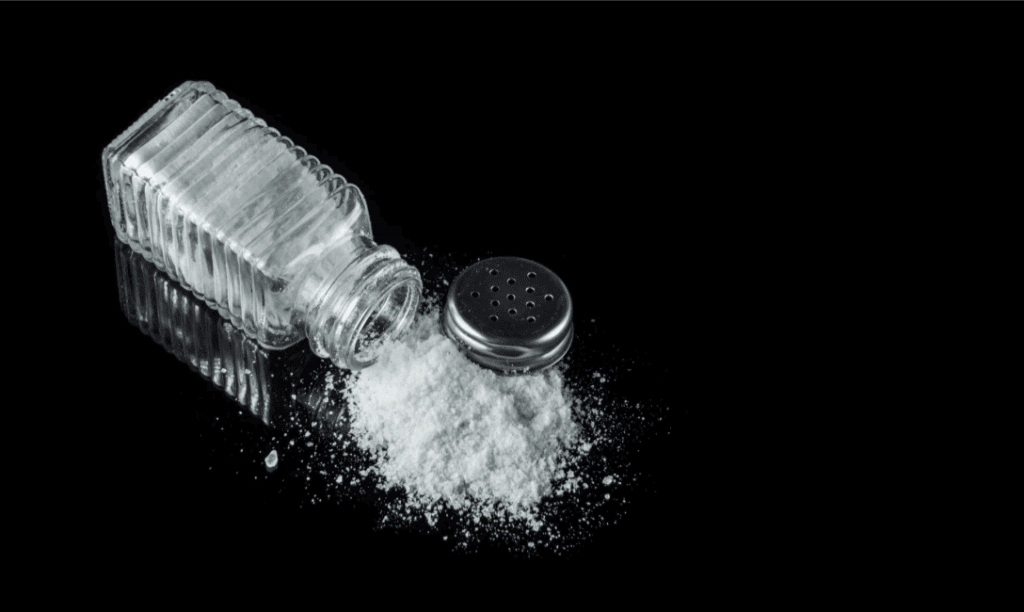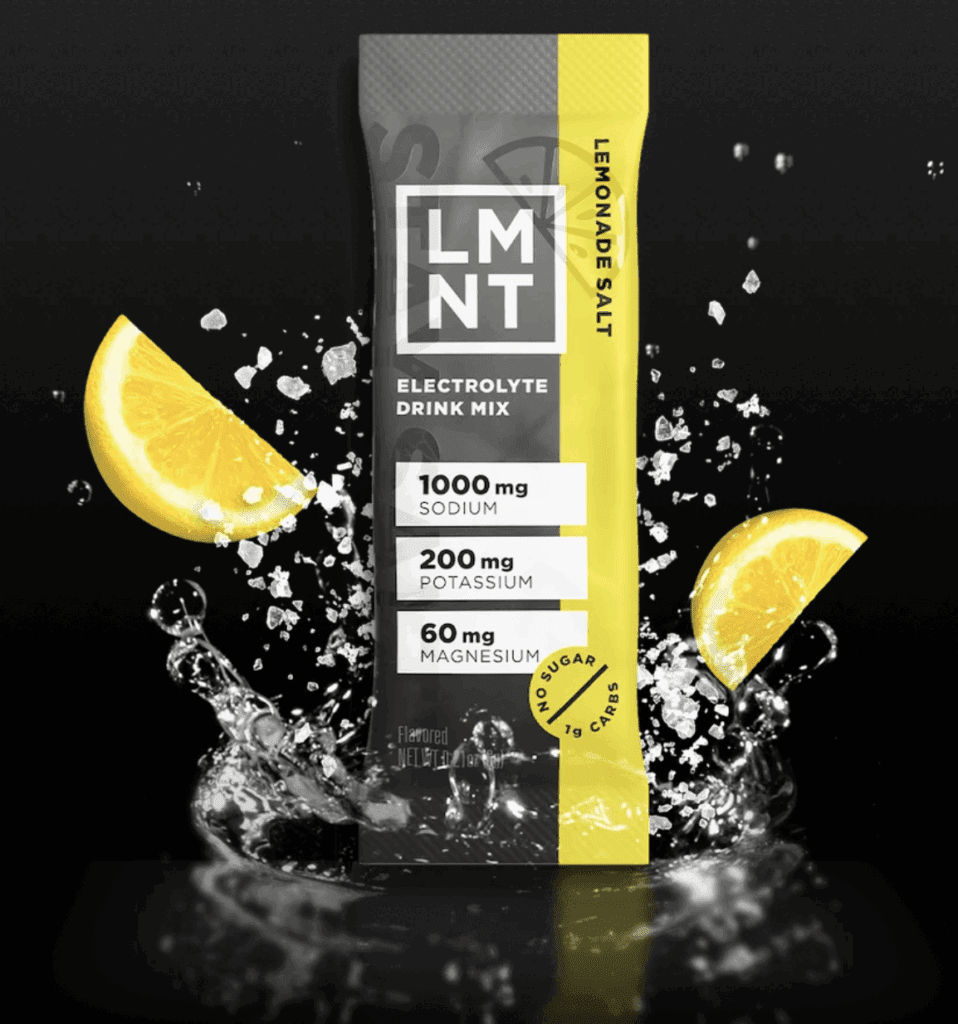Wednesday, October 1st, 2025
“The fad behind added sodium.”
Sodium can sometimes get a bad rap. When we think about sodium, a lot of times we think about its connection to things like hypertension, high cholesterol, heart disease, inflammation, and related diseases. But sodium has some important benefits. Just like anything else with health, nutrition, and fitness, you have to find the happy medium. Sodium seems to be the next upcoming thing – people are adding salt packages, electrolytes, or even eating straight salt packets to their water! So, what does this mean for you?

BENEFITS OF SODIUM IN THE BODY
- Improved Performance of the Heart
- Sodium is an essential nutrient needed by the body to maintain a balance of body fluids and keep muscles and nerves running smoothly
2. Improved Glucose Absorption
- Sodium intake regulates glucose homeostasis. It plays a crucial role in glucose reabsorption, working to maintain glucose levels in the body
- When sodium levels are low, glucose reabsorption is impaired, leading to increased glucose excretion
- Sodium is essential for the body’s ability to keep blood glucose levels within a normal range
3. Improved Nervous System
- Sodium plays a vital role in nerve impulse transmission and muscle contractions. It maintains the electrical gradient across cells allowing for the transmission of signals
4. Improved Overall Muscle Health
- Inadequate sodium levels can lead to muscle cramps, spasms, and reduced performance. Salt helps retain fluids, which can improve muscle function and overall performance.
- Muscle Contraction – sodium is essential for transmitting nerve impulses that trigger muscle contractions. When sodium levels are low, the body may have difficulty transmitting these signals,
potentially leading to muscle weakness and/or cramps - Muscle Performance – salt aids in fluid balance, electrolyte balance, and nerve function. Therefore, optimizing muscle performance
- Muscle Soreness and Recovery – salt baths can help soothe sore muscles, reduce inflammation, and help overall muscle recovery
5. Fluid & Electrolyte Balance
- Electrolyte Balance – sodium helps maintain the electrical balance in the body, which is vital for nerve and muscle function. During exercise, sodium levels can drop, affecting muscle function and performance.
- Fluid Balance – salt helps regulate fluid levels in the body. This is crucial for muscle hydration and performance. When you sweat, you also lose sodium, which can disrupt fluid balance and lead to dehydration and muscle cramping

RECOMMENDATIONS & FACTS
- The American Heart Association states, for healthy adults, the generalrecommendation is to consume no more than 2,300 milligrams (mg) of sodiumper day. Individuals dealing with high blood pressure, or related conditions should be shooting for 1,500 mg or less.
- During exercise, water, electrolytes, and sodium are lost. Adding a small amount of salt to your drinking water helps replenish these lost electrolytes, promoting better water absorption and preventing dehydration.
- While too much sodium in your diet can be unhealthy, skipping salt is not the solution. Sodium is a critical electrolyte that, along with potassium and chloride, helps to deliver water to your body’s cells. A diet low in sodium can increase your risk of dehydration.
Available At F3 /// Fit Flex Fly
LMNT Zero Sugar Electrolyte drink
Offers a healthy alternative to traditional sugary sports drinks. It’s designed to support energy levels, endurance, and recovery. LMNT’s electrolyte blend includes sodium, potassium, and magnesium, crucial
for hydration and overall bodily function.

FINAL THOUGHTS:
The average American diet is usually naturally high in sodium, therefore additional sodium supplements are not something that is needed for most individuals. Although it is something that can be very beneficial to specific populations of people for different reasons. This is a great way to add flavor, increase your daily hydration, and regulate your fluid balance for anyone!

